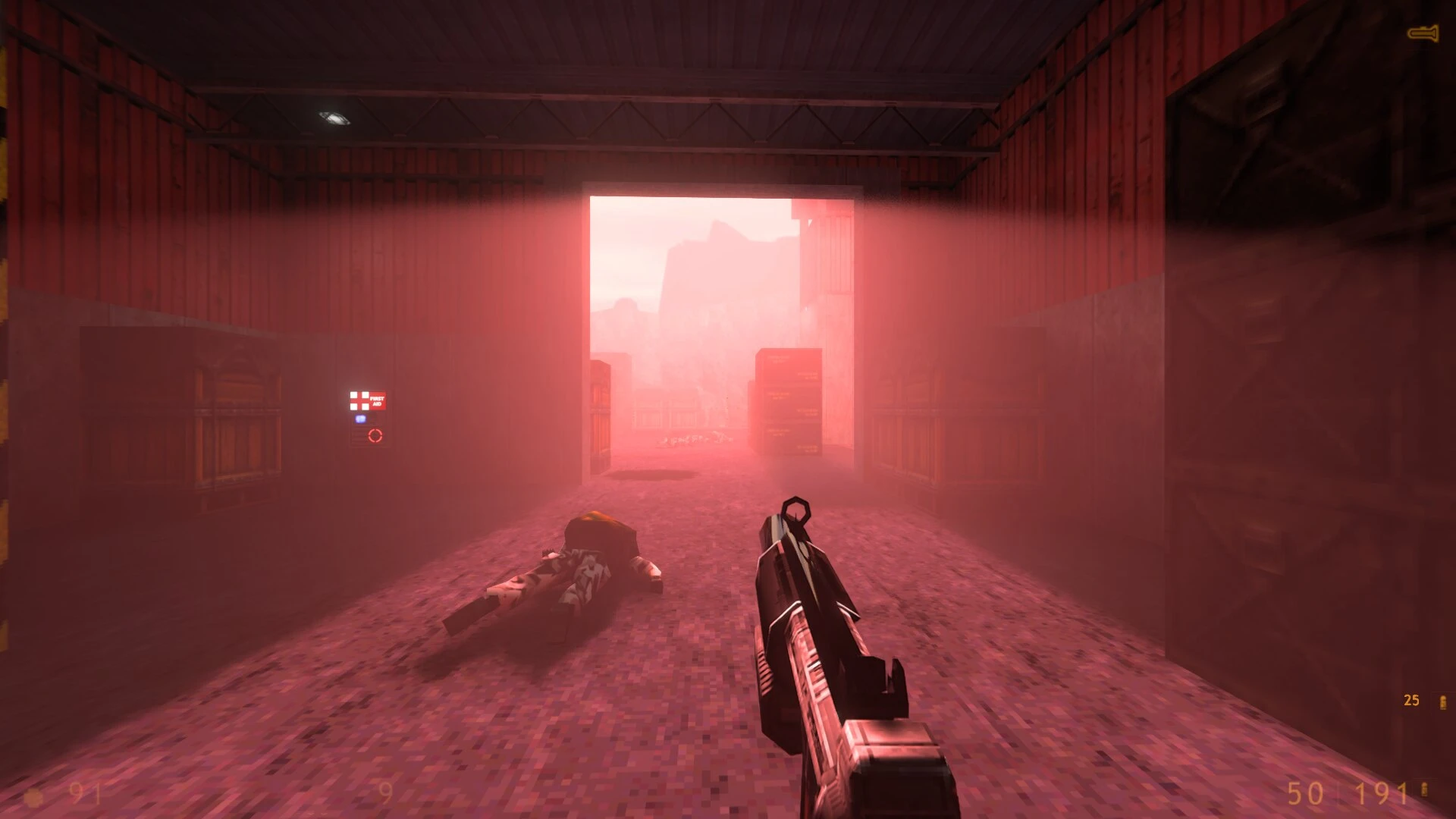
Ретро-OST: 00-е. Становление современного саундтрека
Подборки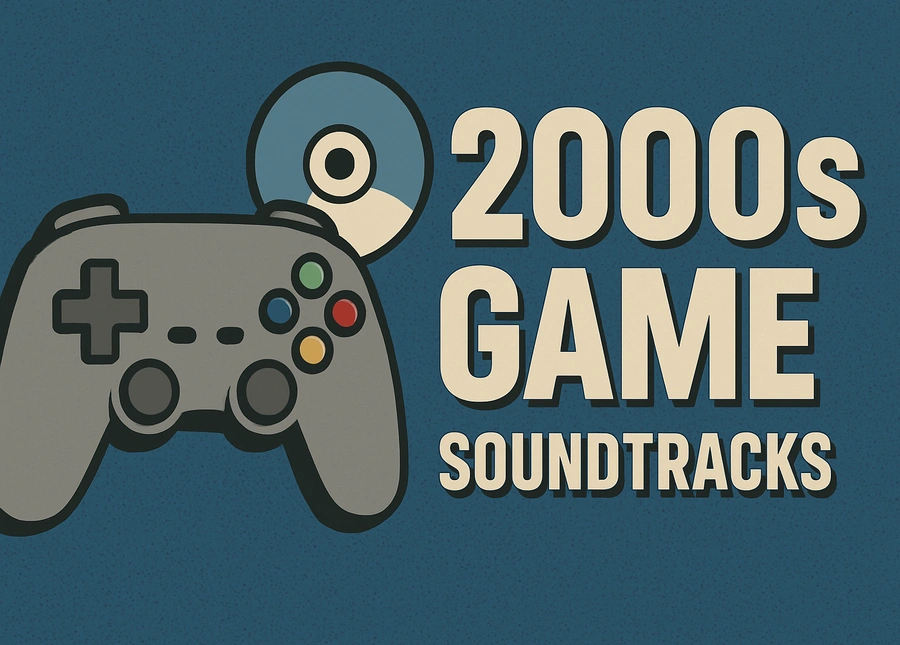
В наших предыдущих путешествиях во времени мы вспоминали, как чиптюны 80-х заложили основы игровой музыки, а 90-е совершили революцию с приходом CD-ROM и полноценными оркестровыми аранжировками. Теперь же мы перенесемся в следующее десятилетие – 2000-е годы, эру, которая окончательно сформировала современный игровой саундтрек и подарила нам невероятное разнообразие музыкальных шедевров.
Нулевые стали временем, когда технологии достигли нового уровня, позволяя композиторам творить без прежних ограничений. Игровая индустрия переживала бурный расцвет, и вместе с ней расцветала и музыка. Это десятилетие подарило нам эпические оркестровые партитуры в фэнтези и научно-фантастических мирах, лицензированные хиты, которые превратили гоночные игры в настоящие радиостанции, и уникальные, атмосферные композиции, ставшие неотъемлемой частью хорроров и приключений. Именно в 2000-е годы игровые саундтреки перестали быть просто фоном, превратившись в полноценные произведения искусства, способные вызывать глубокие эмоции и создавать незабываемые миры. Приготовьтесь вновь окунуться в эти звуковые ландшафты, которые определили целое поколение игр.
Саундтрек Mafia: The City of Lost Heaven (2002)
Саундтрек к оригинальной Mafia: The City of Lost Heaven — это настоящий эталон атмосферности. Вместо обычной оркестровой музыки, игра погружает вас в Америку 30-х годов через аутентичные джазовые, блюзовые и свинговые композиции от таких легенд, как Джанго Рейнхардт и Луи Прима. Эти лицензированные треки не просто фон; они становятся неотъемлемой частью приключения, усиливая ощущение присутствия в эпохе гангстеров.
Помимо лицензированных произведений, оригинальная инструментальная музыка от Владимира Шимунека мастерски дополняет общую атмосферу, добавляя кинематографичности и напряженности в ключевые моменты. Это уникальное сочетание подлинных исторических записей и специально созданных треков делает саундтрек Mafia невероятно глубоким и выразительным. Музыкальное оформление игры — это не просто набор мелодий, а полноценный культурный артефакт, который навсегда вписал Mafia в историю как игру с одним из лучших игровых саундтреков.
Саундтрек FlatOut 2 (2006)
В отличие от джазовой атмосферы Mafia, саундтрек FlatOut 2 представляет собой мощнейшую подборку лицензированных рок-композиций, идеально дополняющих безумный геймплей игры. Разработчики Bugbear Entertainment собрали трек-лист, который моментально ассоциируется с безжалостными гонками на выживание, взрывами и разрушениями. Здесь вы найдете такие группы, как Nickelback, Rise Against, Megadeth, Papa Roach, Yellowcard, Fall Out Boy, Rob Zombie и многие другие. Это не просто фоновая музыка, это топливо для адреналина, которое подгоняет игрока к еще более агрессивному и безбашенному стилю вождения. Каждая гонка, каждое столкновение, каждый трюк под эти треки воспринимается еще более эпично и драйвово.
Музыка в FlatOut 2 — это чистый, неукротимый рок и панк-рок, который идеально синхронизируется с энергией и хаосом на экране. Она задает тон всей игре: динамичный, агрессивный и не дающий расслабиться ни на секунду. Этот саундтрек стал неотъемлемой частью идентичности FlatOut 2 и одной из главных причин, почему многие фанаты вспоминают игру с такой теплотой. Он настолько органично вписан в игровой процесс, что без него FlatOut 2 потерял бы значительную часть своего уникального шарма и узнаваемости.
По сути, саундтрек FlatOut 2 — это самостоятельный рок-концерт, который звучит прямо во время гонок. Он не только усиливает погружение в игровой мир, но и стал своеобразным плейлистом для многих игроков, вышедшим далеко за пределы самой игры. Благодаря этой подборке, FlatOut 2 прочно заняла свое место среди игр с самыми запоминающимися и подходящими к геймплею саундтреками.
Саундтрек FlatOut (2004)
Саундтрек первой части FlatOut, как и у её сиквела, представляет собой энергичный сборник лицензированных рок-композиций, идеально подходящих для жанра разрушительных гонок. Хотя трек-лист может быть менее известен широкой публике по сравнению с FlatOut 2, он всё равно отлично справляется с задачей создания атмосферы хаоса и адреналина. Здесь присутствуют такие группы, как Adema, Dry Kill Logic, Full Scale, Nothingface, No Connection и другие, чьи треки заряжают игру агрессией и динамикой. Музыкальное сопровождение усиливает ощущение скорости, столкновений и разрушений, которые являются визитной карточкой серии.
Музыка в FlatOut служит активным участником игрового процесса, подстёгивая игрока к рискованным манёврам и агрессивной езде. Она задаёт ритм гонкам, делая каждое столкновение и каждый разлетающийся в щепки автомобиль ещё более эффектным. Именно такой подбор композиций помог первой FlatOut заявить о себе как о гоночной игре, где разрушение так же важно, как и финиш.
Саундтрек Казаки: Европейские войны (2001)
Саундтрек к стратегии в реальном времени Казаки: Европейские войны — это совершенно иное, но не менее важное музыкальное явление. В отличие от рок-драйва серии FlatOut или джазовой атмосферы Mafia, здесь мы погружаемся в мир XVII-XVIII веков, и музыкальное сопровождение полностью соответствует этой исторической эпохе. Композитор Андрей Прищенко создал целую палитру оркестровых композиций, которые идеально передают дух масштабных европейских конфликтов, строительства городов и развития наций.
Музыка Казаков часто включает в себя элементы фолка и классических мотивов, характерных для Восточной и Западной Европы того времени, что придаёт ей историческую достоверность. От спокойных, мелодичных тем, сопровождающих мирное развитие вашей базы, до героических и напряжённых маршей, звучащих во время ожесточённых сражений, саундтрек динамично меняется, подстраиваясь под события на экране. Он подчёркивает эпический масштаб происходящего, будь то развёртывание огромных армий или закладка нового здания.
Таким образом, саундтрек Казаков: Европейские войны является неотъемлемой частью идентичности игры. Музыка помогала игрокам по-настоящему почувствовать себя полководцами и строителями империй в бурной европейской истории. Это пример того, как музыка может не только развлекать, но и глубоко погружать в исторический контекст.
Саундтрек Завоевание Америки (2002)
Саундтрек к Завоевание Америки, как и в случае с Казаками играет ключевую роль в создании исторической атмосферы. Музыкальное сопровождение переносит игроков в эпоху колонизации Нового Света, охватывающую период с XVI по XVIII век, когда европейские державы боролись за земли Америки. Композиторы вновь создали оркестровые произведения, которые идеально сочетают в себе эпический масштаб военных конфликтов с мотивами исследования и освоения новых земель.
Мелодии саундтрека умело используют этнические элементы, отражая культуру как европейских колонизаторов, так и коренных народов Америки. Это позволяет глубже погрузиться в уникальный сеттинг игры, где рядом сосуществуют испанские конкистадоры, британские поселенцы, французские торговцы мехом и индейские племена. От торжественных и величественных тем, сопровождающих строительство колоний, до напряженных и драматичных композиций во время ожесточенных сражений за территории, музыка динамично меняется, поддерживая игровой процесс.
В целом, саундтрек Завоевания Америки — это важная часть игрового опыта, которая помогает передать всю сложность и драматизм эпохи Великих географических открытий и колониальных войн. Он подчеркивает историческую достоверность и добавляет игре кинематографичности, делая каждое сражение или развитие поселения ещё более захватывающим.
Саундтрек Grand Theft Auto: Vice City (2002)
Саундтрек к Grand Theft Auto: Vice City — это настоящий эталон того, как музыка может полностью сформировать и передать атмосферу целой эпохи. Разработчики из Rockstar Games не просто добавили музыку; они создали машину времени, переносящую игрока прямо в 1980-е годы. Сердцем саундтрека являются многочисленные радиостанции, каждая из которых специализируется на определённом жанре, но все вместе они представляют собой сокровищницу лицензированных хитов того десятилетия.
От Flash FM с его поп-музыкой и синти-попом (например, Майкл Джексон, Уитни Хьюстон) до V-Rock, транслирующего хард-рок и хэви-метал (такие группы как Iron Maiden, Judas Priest, Ozzy Osbourne) — каждая станция идеально подобрана. Есть также Wave 103 для новой волны, Fever 105 для фанка и диско, Radio Espantoso для латиноамериканской музыки и даже Emotion 98.3 для "мягкого" рока и баллад. Такое разнообразие не только отражает музыкальные вкусы 80-х, но и позволяет игроку выбирать настроение своей поездки по неоновому Вайс-Сити.
Этот саундтрек не просто сопровождает геймплей; он является неотъемлемой частью идентичности Vice City. Музыкальные композиции усиливают ощущение криминального гламура, безудержного веселья и скрытой опасности, которые пронизывают каждый уголок города. Именно благодаря этому тщательно подобранному и обширному плейлисту, саундтрек Vice City стал культовым и до сих пор остаётся одним из самых любимых и узнаваемых в истории видеоигр, мгновенно вызывая ностальгию по золотой эпохе 80-х.
Саундтрек Grand Theft Auto: San Andreas (2004)
Саундтрек к Grand Theft Auto: San Andreas — это колоссальный музыкальный атлас, который идеально передаёт дух и культурное многообразие 90-х годов в вымышленном штате Сан-Андреас. Rockstar Games превзошла саму себя, представив, пожалуй, самый обширный и жанрово разнообразный набор радиостанций в серии на тот момент, каждая из которых стала целым миром.
Игроки могли переключаться между радиостанциями, которые предлагали всё: от золотого века хип-хопа Западного побережья на Radio Los Santos и Playback FM (с такими артистами, как Dr. Dre, Snoop Dogg, Ice Cube), до классического рока 70-х и 80-х на K-DST (Creedence Clearwater Revival, Boston) и альтернативного рока 90-х на Radio X (Soundgarden, Stone Temple Pilots, Rage Against the Machine). Были также станции для любителей фанка (Bounce FM), хауса (SF-UR), кантри (K-Rose) и даже регги и дэнсхолла (K-Jah West). Это разнообразие позволяло полностью погрузиться в атмосферу Калифорнии 90-х, от бандитских улиц Лос-Сантоса до сельских глубин и хиппи-коммун.
Каждая радиостанция не только предлагала десятки лицензированных треков, но и имела своих узнаваемых диджеев (среди которых были озвучены знаменитостями вроде Сэмюэла Л. Джексона и Эксл Роуза), что добавляло игре невероятной аутентичности и живости. Саундтрек San Andreas стал не просто фоном для криминальных приключений Си-Джея; он стал неотъемлемой частью повествования, отражая социальные и культурные тренды эпохи. Именно благодаря этому масштабу и качеству подбора, музыкальное оформление San Andreas по праву считается одним из самых культовых и влиятельных в истории видеоигр.
Саундтрек FIFA 06 (2005)
Саундтрек к FIFA 06 является знаковым для серии и ярко отражает музыкальные тенденции середины 2000-х годов. Это был период, когда FIFA активно формировала свою музыкальную идентичность, предлагая смесь из инди-рока, альтернативного рока, электроники и фанка, что делало её саундтреки узнаваемыми и любимыми по всему миру. Музыка в FIFA 06 не просто сопровождала матчи и меню; она создавала ощущение глобального футбольного праздника, объединяющего разные стили и настроения.
Трек-лист игры включал в себя композиции от популярных на тот момент групп и исполнителей, таких как Oasis, Bloc Party, Keane, Jamiroquai, Doves, Weezer, Placebo и многих других. Такое разнообразие обеспечивало динамичность и свежесть, заряжая энергией перед каждым матчем и сохраняя позитивное настроение даже после поражений. Многие песни из FIFA 06 стали хитами и за пределами игры, а для многих игроков этот саундтрек стал "воротами" в мир инди-музыки.
Влияние саундтрека FIFA 06 простиралось далеко за пределы самой игры. Он помогал создать узнаваемый бренд для всей серии FIFA, которая на протяжении многих лет славилась своими тщательно подобранными музыкальными подборками. Музыкальный директор серии EA Sports, Стив Шнур, всегда подчёркивал важность саундтреков как способа передачи настроения и привлечения новых фанатов к футбольной культуре. В этом смысле, саундтрек FIFA 06 является ярким примером успеха в создании одной из самых запоминающихся игровых музыкальных коллекций своего времени.
Саундтрек FIFA 07 (2006)
Саундтрек к FIFA 07 продолжил традицию EA Sports по представлению эклектичной и глобальной подборки музыки, которая стала визитной карточкой всей серии. В этот год акцент снова был сделан на сочетание инди-рока, альтернативных жанров, электроники и международной музыки, что отражало всеобъемлющий характер мирового футбола. Музыкальное сопровождение FIFA 07 было тщательно подобрано, чтобы заряжать игроков энергией во время матчей, создавать атмосферу в меню и оставаться в памяти ещё долго после выключения игры.
Трек-лист FIFA 07 включал в себя композиции от уже известных и восходящих звёзд музыкальной индустрии, таких как Muse, The Feeling, Damian Marley, Paul Oakenfold, Infadels, The Pinker Tones и многих других. Это разнообразие обеспечивало динамичное и свежее звучание, идеально подходящее для азарта футбольных баталий. Многие из этих песен стали хитами, и для большого числа фанатов игры саундтрек FIFA 07 стал источником новых музыкальных открытий, расширяя их кругозор за пределы мейнстрима.
Влияние саундтрека FIFA 07 нашло отражение в его популярности, которая лишь укрепила репутацию серии FIFA как площадки для продвижения новой и интересной музыки со всего мира. Музыкальные подборки FIFA не просто дополняли игровой процесс; они помогали формировать культурный фон для целого поколения геймеров, приобщая их к разнообразным жанрам и исполнителям. Саундтрек FIFA 07 остается одним из ярких примеров успешного музыкального кураторства в видеоиграх.
Саундтрек Lineage 2 (2003)
Саундтрек к многопользовательской ролевой онлайн-игре (MMORPG) Lineage 2 является одним из самых узнаваемых и любимых среди фанатов жанра. Созданный главным образом Биллом Брауном и Джейми Кристоферсоном, музыкальное сопровождение игры представляет собой величественные оркестровые композиции, которые глубоко погружают игроков в фэнтезийный мир Адена и Эльмора. Музыка Lineage 2 не просто сопровождает игровой процесс; она усиливает эпическое ощущение приключения, масштабных сражений и исследования огромных территорий.
Мелодии саундтрека варьируются от спокойных и медитативных тем, звучащих в мирных городах и зонах для охоты, до драматичных и героических композиций, которые сопровождают битвы с боссами, осады замков и PvP-сражения. Каждая локация, будь то леса, подземелья или замки, имеет свою уникальную музыкальную тему, которая способствует созданию неповторимой атмосферы и подчеркивает её характер. Эта смена настроений и стилей помогает игрокам ощутить всю глубину и динамику мира Lineage 2.
Благодаря своему качеству и способности вызывать сильные эмоции, саундтрек Lineage 2 приобрёл культовый статус среди фанатов. Его композиции часто выходят за рамки самой игры, становясь частью плейлистов игроков и даже исполняясь на концертах. Он является ярким примером того, как музыкальное оформление в MMORPG может не только поддерживать геймплей, но и становиться неотъемлемой частью идентичности и наследия игры.
Саундтрек Civilization IV (2005)
Саундтрек к Civilization IV стал настоящим феноменом. Его заглавная композиция, "Baba Yetu", написанная Кристофером Тином, является первой в истории песней из видеоигры, получившей премию "Грэмми". Эта мощная хоровая композиция на языке суахили мгновенно стала узнаваемой и задала величественный тон всей игре, посвящённой развитию цивилизаций на протяжении тысячелетий.
Помимо "Baba Yetu", весь остальной саундтрек игры также отличается исключительным качеством. Музыкальное оформление мастерски сочетает этнические мотивы разных культур с классическими оркестровыми аранжировками, идеально отражая прогресс вашей империи от древних эпох до современности. Музыка меняется в зависимости от того, в какой исторической эпохе находится ваша цивилизация, добавляя игре глубины и динамики.
Именно благодаря такому вниманию к деталям, культурному разнообразию и выдающемуся качеству, саундтрек Civilization IV стал культовым и часто приводится в пример как один из лучших игровых саундтреков всех времён, особенно среди игр, выпущенных в нулевые годы.
Саундтрек Katamari Damacy (2004)
Саундтрек к игре Katamari Damacy настолько же эксцентричен и восхитителен, как и сама игра. Он мгновенно узнаваем и представляет собой совершенно уникальную смесь жанров, которая идеально дополняет безумную и очаровательную концепцию "катящегося шара". Музыкальное оформление Katamari Damacy является неотъемлемой частью уникальной атмосферы игры, вызывающей улыбку.
Музыкальная палитра саундтрека невероятно широка и эклектична. Здесь можно услышать джаз, лаунж, электронику, фанк, поп, босса-нову и даже элементы японской традиционной музыки, часто смешанные в неожиданных, но гармоничных сочетаниях. Многие композиции отличаются весёлым, легкомысленным настроением, запоминающимися мелодиями и причудливыми вокальными партиями, которые иногда звучат как бессмысленные, но милые напевы или детские хоры. Композиторы, такие как Ю Мияке, Акира Оки, Кацухиро Ивата и другие, создали коллекцию треков, каждый из которых представляет собой маленький шедевр странности и радости.
Саундтрек Katamari Damacy заряжает позитивом, стимулирует игрока к дальнейшему катанию шара и поглощению всего на своём пути. Он настолько своеобразен и при этом гармоничен, что стал культовым среди фанатов и часто упоминается как один из самых оригинальных и лучших игровых саундтреков нулевых. Его уникальность в том, что он идеально соответствует своей цели — заставить игрока улыбаться и наслаждаться абсурдностью происходящего.
Саундтрек Kingdom Hearts II (2005)
Саундтрек к Kingdom Hearts II — это настоящая симфония, сотканная из двух совершенно разных, но идеально сочетающихся миров: эпических оркестровых мелодий Final Fantasy и волшебных, запоминающихся тем Disney. Главным композитором серии, включая Kingdom Hearts II, является непревзойденная Ёко Симомура, чья работа признана одним из столпов успеха всей франшизы.
Музыкальное оформление игры искусно переплетает оригинальные композиции Симомуры с аранжировками классических мелодий из мультфильмов Disney, которые игрок посещает. Например, в мире "Короля Льва" вы услышите переработанные версии песен из мультфильма, а в "Пиратах Карибского моря" — вариации на знакомые пиратские темы. Однако именно оригинальные композиции Симомуры, такие как "Dearly Beloved", "Passion/Sanctuary" (открывающая и закрывающая темы), а также многочисленные боевые и сюжетные треки, придают игре её уникальную эмоциональную глубину и эпичность. Её музыка способна мгновенно передать чувство надежды, отчаяния, героизма или таинственности.
Саундтрек Kingdom Hearts II не просто сопровождает действия на экране; он является мощным эмоциональным двигателем, который усиливает драматизм сюжета, динамичность сражений и волшебство каждого нового мира. Он играет ключевую роль в создании той уникальной атмосферы, которая так полюбилась миллионам фанатов, делая каждое приключение Соры и его друзей по-настоящему незабываемым.
Саундтрек Silent Hill 2 (2001)
Саундтрек к Silent Hill 2 от Konami, — это не просто музыкальное сопровождение, это фундаментальная часть ужасающего и глубоко эмоционального опыта игры. Созданный легендарным Акирой Ямаокой, этот саундтрек считается одним из величайших в истории видеоигр и является ключевым элементом, погружающим игрока в психологический террор и отчаяние Туманного Холма.
Музыка Ямаоки в Silent Hill 2 отличается уникальным, часто диссонирующим и тревожным звучанием, которое идеально передаёт чувство изоляции, страха и психического расстройства главного героя, Джеймса Сандерленда. Вместо традиционных пугающих скримеров, Ямаока использует атмосферные, эмбиентные композиции, которые медленно, но верно нагнетают напряжение. Он мастерски сочетает индастриал, нойз, трип-хоп и элементы блюза, создавая нечто совершенно уникальное. Есть и пронзительно красивые, меланхоличные мелодии, такие как знаменитая "Theme of Laura" или "Promise (Reprise)", которые отражают трагедию и горе, лежащие в основе сюжета. Эти композиции дают игроку кратковременные моменты передышки от ужаса, но при этом усиливают ощущение грусти и безысходности.
Саундтрек Silent Hill 2 не просто сопровождает визуальный ряд; он активно участвует в создании неповторимой атмосферы Silent Hill, становясь своего рода голосом самого города и его обитателей. Он проникает глубоко в подсознание, вызывая беспокойство и тревогу, которые остаются с игроком даже после выключения игры. Это музыкальное произведение является самостоятельным шедевром, который до сих пор вдохновляет и пугает, оставаясь одним из самых значимых вкладов в жанр хоррора.
Саундтрек Halo: Combat Evolved (2001)
Саундтрек к Halo: Combat Evolved стал одним из самых узнаваемых и влиятельных в истории видеоигр, мгновенно утвердив свой уникальный стиль. Созданный дуэтом Мартина О'Доннелла и Майкла Сальватори, музыкальное сопровождение игры пронизано эпичностью, таинственностью и ощущением древности, идеально соответствуя масштабу научно-фантастической вселенной Halo.
Визитной карточкой саундтрека является знаменитая "Halo Theme" с её запоминающимся григорианским хором и мощными оркестровыми партиями. Эта тема не только открывает игру, но и служит основой для многих других композиций, обеспечивая узнаваемость и преемственность на протяжении всей игры и последующих частей серии. Музыкальное оформление Halo: Combat Evolved сочетает в себе оркестровые аранжировки с элементами электроники, хорального пения и мощных ударных, создавая одновременно героическое и меланхоличное звучание.
Саундтрек динамично адаптируется к игровому процессу: от спокойных, эмбиентных мелодий, сопровождающих исследование таинственных инопланетных структур, до напряжённых, адреналиновых треков, под которые происходят масштабные перестрелки с Ковенантом. Композиции, такие как "Truth and Reconciliation Suite", "Rock Anthem for Saving the World" и "Perilous Journey", стали культовыми среди фанатов и сыграли огромную роль в создании неповторимой атмосферы Halo, делая приключения Мастера Чифа ещё более захватывающими и драматичными.
Саундтрек Shadow of the Colossus (2005)
Саундтрек к Shadow of the Colossus - это один из самых мощных и эмоционально насыщенных в истории видеоигр. Созданный японским композитором Ко Отани, он играет важнейшую роль в формировании уникальной атмосферы игры, передавая чувство грандиозности, одиночества и трагедии. Музыкальное сопровождение игры построено на резком контрасте, который усиливает каждое ключевое событие.
Большую часть времени, пока игрок путешествует по огромным, пустынным землям в поисках следующего колосса, царит почти полная тишина, прерываемая лишь звуками ветра, цокотом копыт верного коня Агро и криками птиц. Эта тишина подчеркивает изоляцию главного героя, Вандера, и масштаб мира, который он исследует. Однако, как только Вандер находит колосса и начинается битва, саундтрек взрывается мощными, эпическими оркестровыми композициями. Эти треки, такие как "The Opened Way" или "A Despair-Filled Farewell", насыщены драматизмом, героическими мотивами и хором, передавая ощущение колоссальной мощи противника и отчаянной борьбы.
Музыка Ко Отани прекрасно отражает эмоциональную дугу игры: от надежды и решимости в начале битвы, через напряжение и отчаяние во время восхождения на колосса, до торжества и меланхолии после победы. Некоторые композиции после повержения колосса наполнены не столько триумфом, сколько грустью и тяжестью, что подчеркивает неоднозначную мораль действий Вандера. Благодаря этому динамическому и эмоциональному использованию музыки, саундтрек Shadow of the Colossus стал культовым, получив множество наград и признание как один из наиболее выразительных и запоминающихся игровых саундтреков всех времён.
Саундтрек Pokémon Ruby and Sapphire (2002)
Саундтрек к играм Pokémon Ruby and Sapphire, выпущенным Game Freak для Game Boy Advance, является одним из самых ярких и запоминающихся в истории серии Pokémon. Созданный Дзюнъити Масудой, Го Итиносэ и Морикадзу Аоки, он стал значительным шагом вперед в музыкальном оформлении покемон-игр благодаря переходу на более мощную звуковую систему Game Boy Advance, что позволило добиться более богатого и динамичного звучания.
Музыка в Ruby and Sapphire отличается особым, ярким и энергичным настроением. Многие композиции используют более интенсивные перкуссии и синтезированные звуки, создавая ощущение приключения и исследования тропического региона Хоэнн, вдохновленного японским островом Кюсю. От задорных тем городов и маршрутов, таких как "Littleroot Town" и "Route 110", до напряжённых и драматичных боевых тем, вроде "Battle! Wild Pokémon" или "Battle! Trainer", саундтрек идеально передаёт разнообразие ситуаций и эмоций. Особенно выделяются темы сражений с легендарными покемонами и лидерами стадионов, которые остаются одними из самых любимых среди фанатов.
Благодаря своему живому и запоминающемуся стилю, саундтрек Pokémon Ruby and Sapphire приобрёл культовый статус. Он не только подчеркнул уникальность региона Хоэнн и его покемонов, но и оставил глубокий след в сердцах миллионов игроков, многие из которых до сих пор считают его одним из лучших в серии. Он является ярким примером того, как музыка может оживить игровой мир и сделать его по-настоящему незабываемым.
Саундтрек Jet Set Radio (2000)
Саундтрек к игре Jet Set Radio (известной в Северной Америке как Jet Grind Radio), вышедшей на Dreamcast, является одним из самых уникальных, новаторских и культовых в истории видеоигр. Он стал таким же неотъемлемым элементом стиля игры, как и её революционная сел-шейдинговая графика. Музыкальное сопровождение игры было создано главным образом Хидеки Наганумой, и оно определяет всю дерзкую, энергичную и бунтарскую атмосферу Токио.
Музыкальный стиль саундтрека можно охарактеризовать как смесь фанка, хип-хопа, электроники, брейкбита, драм-н-бейса и джей-попа. Композиции Наганумы отличаются невероятной энергией, "залипающими" битами и причудливыми вокальными сэмплами, которые создают ощущение постоянного движения и городской суеты. Такие треки, как "Super Brothers", "Humming the Bassline", "Bout the City" и "Teknopathetic", стали визитной карточкой игры и мгновенно узнаваемы даже спустя десятилетия. Эта музыка идеально подходит для катания на роликах по улицам, ухода от полиции и оставления граффити, подчёркивая дух свободы и неповиновения.
Саундтрек Jet Set Radio не просто служит фоном; он является голосом игры, её ритмом и её настроением. Он не только подчеркнул новаторский визуальный стиль, но и сам стал предметом культа, вдохновляя многих музыкантов и оставаясь любимым плейлистом для фанатов по всему миру. Его оригинальность и смелость сделали его одним из самых влиятельных игровых саундтреков нулевых, доказав, что музыка в видеоиграх может быть столь же важным художественным выражением, как и любая другая составляющая.
Саундтрек Sonic Adventure 2 (2001)
Саундтрек к игре Sonic Adventure 2, выпущенной для SEGA и Dreamcast, а затем портированной на другие платформы, является одним из самых узнаваемых и энергичных в истории серии Sonic the Hedgehog. Созданный командой композиторов SEGA, включая Дзюн Сэноуэ, музыкальное оформление Sonic Adventure 2 представляет собой мощную смесь жанров, которая идеально соответствует высокоскоростному геймплею, разнообразным персонажам и динамичному сюжету.
Музыка в Sonic Adventure 2 отличается агрессивным, скоростным роком, а также элементами хип-хопа, фанка и поп-музыки. Каждый персонаж или тип миссии имеет свою характерную музыкальную тему. Например, уровни Соника и Шэдоу сопровождаются драйвовыми рок-композициями с сильными гитарными риффами и энергичным вокалом (например, "Live & Learn" — заглавная тема игры, ставшая культовой, или "Escape from the City"). Миссии Руж и Наклза, связанные с поиском изумрудов, сопровождаются треками в стиле хип-хоп с речитативом, что добавляет им уникальный ритм. Уровни Тейлза и Эггмана, ориентированные на стрельбу из мехов, имеют более электронное и механическое звучание.
Саундтрек Sonic Adventure 2 не просто задаёт темп; он усиливает ощущение скорости, азарта и приключений. Музыка динамично подстраивается под события на экране, от головокружительных забегов до напряжённых сражений с боссами. Благодаря своей энергичности, разнообразию и культовым композициям, саундтрек Sonic Adventure 2 остаётся одним из самых любимых и часто упоминаемых среди фанатов Sonic, являясь важной частью его неповторимого шарма.
Саундтрек Metroid Prime
Саундтрек к игре Metroid Prime - это яркий пример атмосферного и запоминающегося музыкального оформления. Созданный композиторами Кенджи Ямамото и Коичи Кёума, он идеально дополняет геймплей от первого лица, глубокое погружение в инопланетные миры и ощущение одиночества и исследования, которые являются визитной карточкой серии Metroid.
Музыка в Metroid Prime отличается глубоким эмбиентным звучанием, смешанным с элементами электроники, оркестровых инструментов и даже синтезированных хоралов. Каждая локация на планете Таллон IV — от таинственных руин Чозо и ледяных пустошей Фендраны до раскаленных Магмовых жил и биоорганических Флаагра — имеет свою уникальную музыкальную тему, которая не просто передаёт её характер, но и усиливает чувство опасности, тайны или даже красоты. Например, главная тема "Tallon Overworld" задаёт тон всего приключения, а композиции, такие как "Phendrana Drifts", стали культовыми благодаря своей меланхоличной и завораживающей атмосфере.
Этот саундтрек играет ключевую роль в создании ощущения изоляции и масштаба, когда Самус Аран в одиночку исследует враждебную инопланетную среду. Музыка динамично меняется, реагируя на события: она усиливает напряжение во время столкновений с врагами, подчёркивает моменты открытия новых областей и создаёт чувство триумфа после победы над сложным боссом. Саундтрек Metroid Prime считается одним из лучших игровых саундтреков нулевых, а также одним из самых атмосферных и влиятельных в жанре научно-фантастических приключений.
Саундтрек King's Bounty: Легенда о рыцаре (2008)
Саундтрек к игре King's Bounty: Легенда о рыцаре, созданный в основном Михаилом Костылевым, является ключевым элементом, формирующим её фэнтезийную атмосферу. Музыкальное оформление погружает игроков в мир приключений, магии и сражений.
Здесь преобладают богатые оркестровые композиции, сочетающие классическую симфоническую музыку и фолковые мотивы. Каждая локация имеет свою уникальную тему, которая передаёт её характер — от спокойных городских мелодий до динамичных и драматичных боевых треков. Саундтрек динамично адаптируется к событиям, усиливая чувство исследования и масштабность сражений. Благодаря своей атмосферности и мелодичности, он стал любимым для многих фанатов фэнтези-RPG.
Саундтрек King's Bounty: Принцесса в доспехах (2009)
Саундтрек к игре King's Bounty: Принцесса в доспехах, продолжает традиции музыкального оформления, заложенные в "Легенде о Рыцаре". Музыка, вновь созданная преимущественно Михаилом Костылевым, погружает игроков в расширенный, ещё более сказочный мир Теаны, где главная героиня, принцесса Амели, отправляется в героическое приключение.
Музыкальное сопровождение в Принцессе в доспехах сохраняет свой узнаваемый стиль, представляя собой богатые оркестровые композиции с элементами фолка и эпической фэнтези-музыки. Темы стали ещё более разнообразными, отражая новые уникальные локации, такие как Плавающие Острова, подводные миры и другие измерения. От величественных и вдохновляющих мелодий, сопровождающих полёты на драконе и исследование островов, до динамичных и напряжённых треков, звучащих во время тактических сражений с новыми видами противников, саундтрек идеально подчёркивает приключенческий дух игры.
Каждая фракция и ключевой момент имеют свою музыкальную идентичность, что усиливает погружение в мир игры. Саундтрек Принцессы в доспехах не только поддерживает атмосферу сказочного фэнтези, но и обогащает эмоциональный опыт игрока, делая каждое открытие и каждую победу более запоминающимися. Он является достойным продолжением музыкального наследия серии King's Bounty, любимым многими фанатами за свою красоту и способность передавать дух героических приключений.
Саундтрек Tropico 3 (2009)
Саундтрек к игре Tropico 3 - это один из главных элементов, создающих неповторимую атмосферу банановой республики. Музыкальное оформление погружает игроков в мир Карибских островов, жаркого солнца, политических интриг и диктаторского правления Эль Президенте.
Основой саундтрека являются латиноамериканские ритмы и мелодии, вдохновленные музыкой Кубы и других стран Карибского бассейна. Вы услышите много мамбо, сальсы, ча-ча-ча, румбы и других традиционных стилей, исполненных на акустических гитарах, перкуссии, трубах и других типичных инструментах. Эти зажигательные и энергичные композиции создают ощущение вечного праздника и беззаботности, идеально маскируя сложности и проблемы, с которыми сталкивается ваша нация.
Музыка в Tropico 3 не только задаёт тон игре, но и подчёркивает её юмористический и сатирический подтекст. Она сопровождает игрока на всех этапах: от строительства инфраструктуры и управления экономикой до подавления восстаний и произнесения пламенных речей с балкона дворца. Благодаря своей аутентичности, весёлым мелодиям и способности передать дух Карибского региона, саундтрек Tropico 3 стал любимым для многих фанатов серии и является неотъемлемой частью её обаяния.
Саундтрек Burnout Paradise (2008)
Саундтрек к игре Burnout Paradise представляет собой взрывную смесь жанров, идеально соответствующую безудержным скоростным гонкам и хаотичным разрушениям, которыми славится серия. Музыкальное оформление игры не просто задаёт темп; оно становится неотъемлемой частью адреналинового опыта исследования открытого мира Парадайз-Сити.
Основой саундтрека является эклектичная подборка лицензированных треков от таких исполнителей, как Guns N' Roses (с их культовой "Paradise City", которая дала название городу), Avril Lavigne, Faith No More, Jane's Addiction, LCD Soundsystem, N.E.R.D. и многих других. Жанровый диапазон охватывает рок, панк-рок, инди-рок, электронную музыку и даже поп, обеспечивая разнообразие, чтобы каждая погоня, заезд или трюк ощущались по-своему. Эти энергичные композиции создают ощущение постоянного драйва, подталкивая игрока к агрессивной езде, зрелищным авариям и выполнению невероятных трюков.
Помимо лицензированных треков, игра также включает оригинальные композиции от Хавира Лимпио и Бобби Салинаса, которые гармонично вписываются в общую атмосферу. Саундтрек Burnout Paradise стал культовым среди фанатов. Его способность идеально сочетаться с визуальным рядом и геймплеем, превращая каждую поездку по городу в мини-клип, сделала его одним из самых запоминающихся и подходящих к игре музыкальных оформлений нулевых.
Саундтрек Need for Speed: Underground 2 (2004)
Саундтрек к игре Need for Speed: Underground 2 является культовым и неотделим от её образа. Музыкальное оформление стало ключевым элементом, который погружал игроков в мир уличных гонок, тюнинга и ночного города Бэйвью. Этот саундтрек идеально отражает эпоху расцвета кастомизации автомобилей и андеграундной гоночной культуры начала 2000-х.
В основе саундтрека лежит мощная смесь хип-хопа, рока, электроники и альтернативной музыки. Он включает в себя лицензированные треки от таких известных исполнителей, как Snoop Dogg (с ремиксом "Riders on the Storm" The Doors), Chingy, Xzibit, Terror Squad, Queens of the Stone Age, Rise Against, Mudvayne, Killradio и многих других. Это разнообразие жанров обеспечивает постоянный приток энергии, идеально подходящий для высокоскоростных заездов, дрифта и уличных соревнований. Каждый трек был подобран так, чтобы усиливать ощущение скорости и адреналина, будь то гонка по шоссе или исследование скрытых уголков города.
Саундтрек Underground 2 стал своеобразным плейлистом для целого поколения геймеров, а многие композиции до сих пор вызывают сильную ностальгию. Он не просто сопровождал игру; он задавал её ритм, подчеркивал дерзкий и бунтарский дух уличных гонок и помог сделать Need for Speed: Underground 2 одной из самых запоминающихся частей серии.
Саундтрек Need for Speed: Most Wanted (2005)
Саундтрек к Need for Speed: Most Wanted - это один из самых мощных и культовых в истории гоночных игр, идеально воплощая дух опасных уличных гонок и полицейских погонь. Музыкальное оформление этой части серии NFS создаёт невероятное ощущение скорости, напряжения и бунтарства, став неотъемлемой частью идентичности игры.
Основой саундтрека является агрессивная и динамичная смесь рока, металла, хип-хопа, драм-н-бейса и электроники. В него вошли лицензированные треки от таких известных исполнителей, как Styles of Beyond ("Nine Thou"), The Prodigy ("You'll Be Under My Wheels"), Disturbed ("Decadence"), Avenged Sevenfold ("Blinded in Chains"), Mastodon ("Blood and Thunder"), Bullet for My Valentine ("Hand of Blood") и многих других. Такое разнообразие жанров обеспечивает постоянный приток адреналина, который идеально сочетается с высокоскоростными погонями от полиции, разрушительными препятствиями и эпическими дуэлями с боссами из Чёрного списка. Каждый трек был тщательно подобран, чтобы усилить ощущение опасности и триумфа.
Помимо лицензированных композиций, в игре также присутствует оригинальный инструментальный саундтрек, написанный Полом Линфордом, который звучит во время полицейских погонь. Эти треки, такие как "The Mann" или "Most Wanted Mash Up", создают нарастающее напряжение и чувство безысходности по мере того, как уровень преследования увеличивается. Саундтрек Most Wanted стал настоящим феноменом и для многих игроков ассоциируется с золотой эрой Need for Speed, оставаясь одним из самых запоминающихся и любимых в нулевых.
Саундтрек Command & Conquer: Generals (2003)
Command & Conquer: Generals выделяется среди стратегий начала 2000-х не только современной для своего времени графикой и новым движком SAGE, но и запоминающимся саундтреком, написанным Биллом Брауном и Майклом Джакомино. Музыка в игре подчеркивает различия между фракциями: напряжённые электронные ритмы США, маршевые и агрессивные тембры Китая, а также этнические и тревожные мотивы ГЛА. Этот подход усиливает атмосферу конфликта и делает каждую сторону уникальной даже на звуковом уровне.
Мелодии динамично адаптируются к происходящему на поле боя, сопровождая игрока от спокойных моментов строительства базы до накала глобального наступления. Саундтрек Generals не только стал фирменным звучанием игры, но и получил культовый статус среди фанатов стратегии. Он до сих пор высоко ценится за сочетаемость с геймплеем, кинематографичность и умелое музыкальное отражение идеологии трёх сторон.
Заключение
Что ж, наше путешествие по звуковым дорожкам нулевых подошло к концу. Мы увидели, как игровые саундтреки окончательно вышли из тени, превратившись из простого сопровождения в самостоятельные произведения искусства, способные вызывать мощные эмоции и глубоко погружать нас в игровые миры. От эпических оркестровых партитур Civilization IV и Halo: Combat Evolved до драйвовых рок-песен FlatOut 2 и Need for Speed: Most Wanted, от меланхоличных симфоний Silent Hill 2 до заводных ритмов Katamari Damacy и латиноамериканских напевов Tropico 3 – каждое десятилетие подарило нам свои знаковые звуки.
Нулевые стали временем беспрецедентного разнообразия и качества, когда каждый жанр находил своё идеальное музыкальное воплощение. Композиторы и звукорежиссеры уже не были ограничены технологиями, а игровая индустрия стала признавать музыку как важнейший элемент своего искусства. Саундтреки этого периода не только остались в нашей памяти, но и стали источником вдохновения для многих будущих поколений игр и музыкантов.
Надеемся, это ретроспективное погружение вновь разбудило в вас ностальгию и заставило по-новому взглянуть на те самые мелодии, под которые мы проводили сотни часов. Какие из этих саундтреков оставили у вас самые яркие воспоминания?
Рекомендуемые файлы

OpenTyrian2000Tyrian 2000 (1999)
OpenTyrian2000 - открытый порт игры Tyrian, целью которого является максимально точное воспроизведение игрового опыта Tyrian 2000.
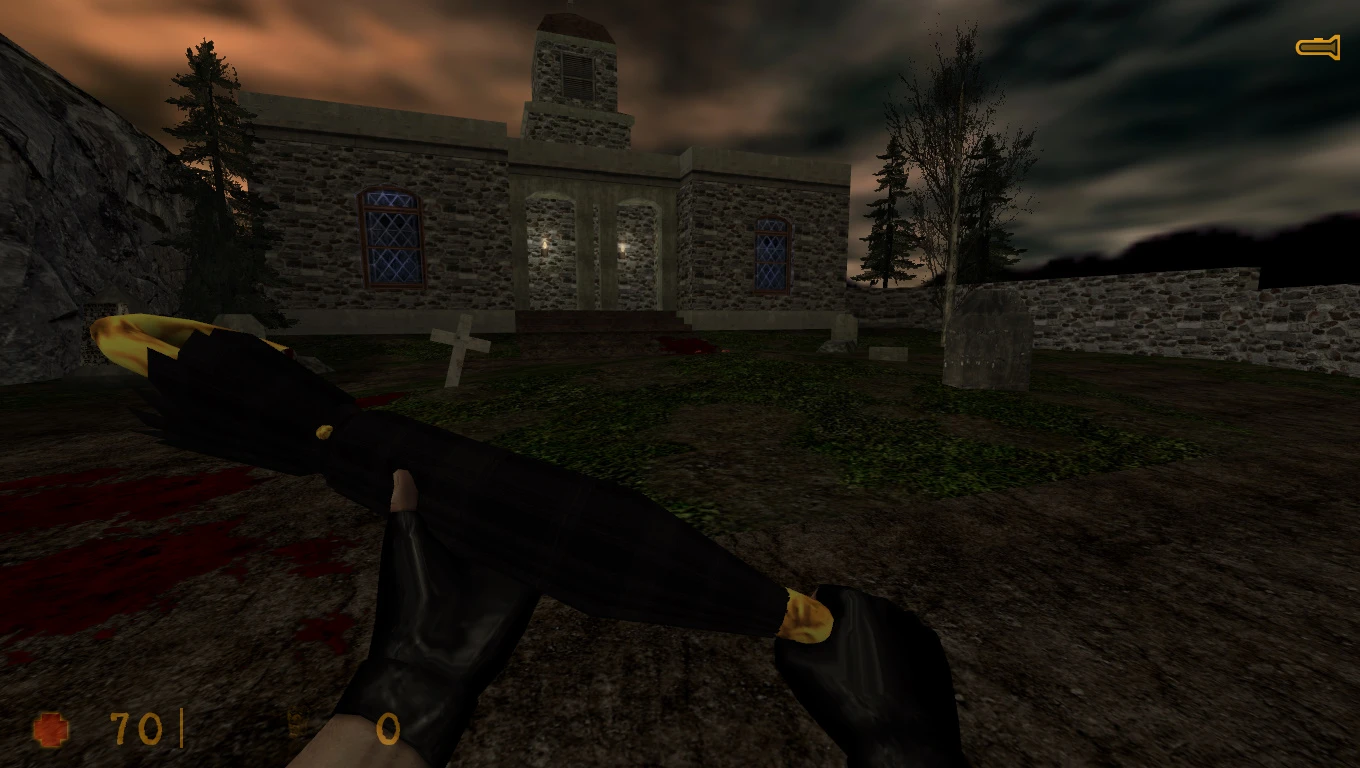
They Hunger XashXT (Unfinished Pre-Alpha)Half-Life (1998)
Модифицированная версия They Hunger на основе движка Xash3D, которая включает UD модели и качественные текстуры, а также множеством дополнительных мод-паков.
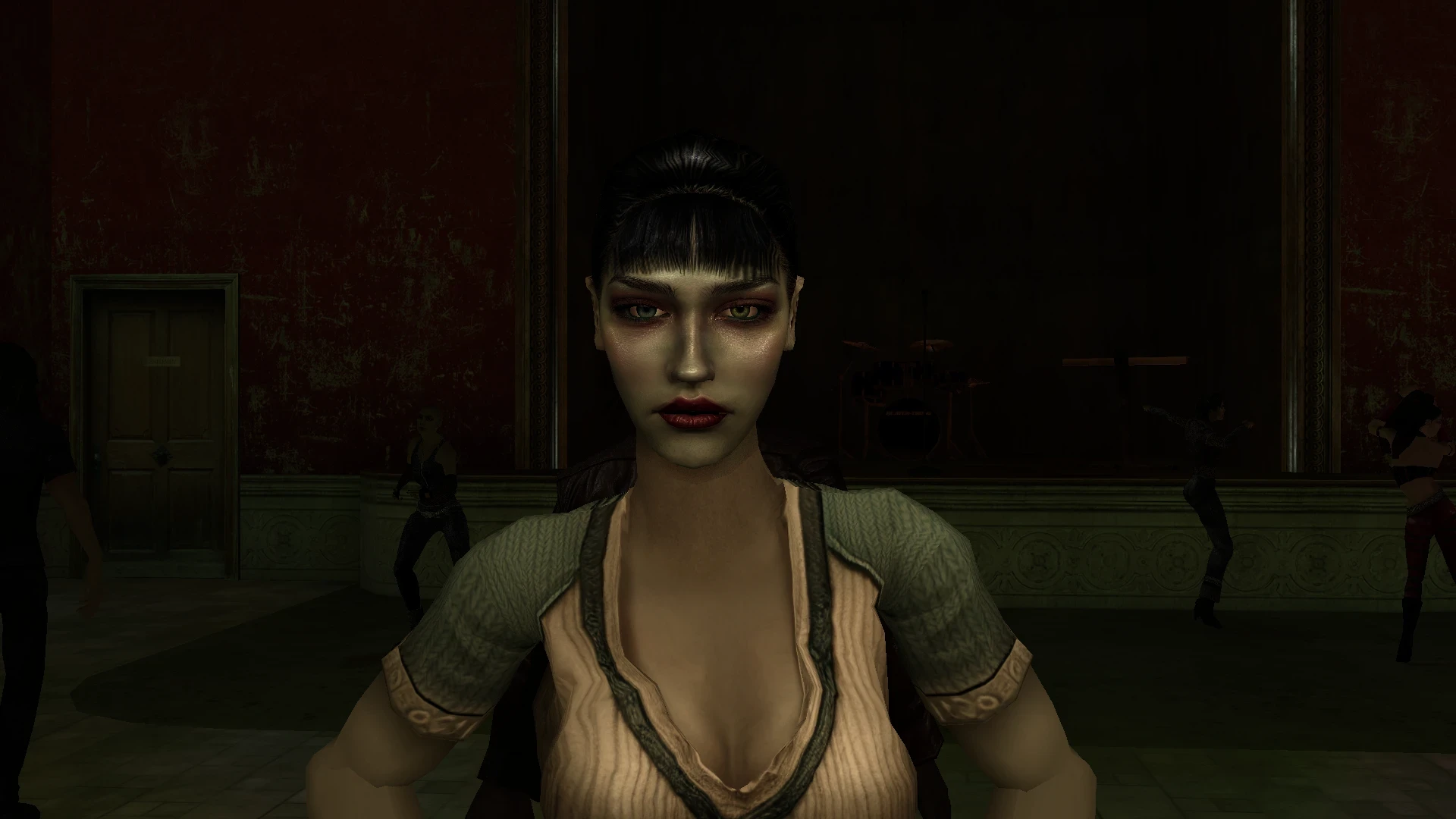
Player Characters ImprovedVampire: The Masquerade - Bloodlines (2004)
Player Characters Improved – мод для Vampire: The Masquerade – Bloodlines, который значительно улучшает качество текстур лиц и тел персонажей игроков.
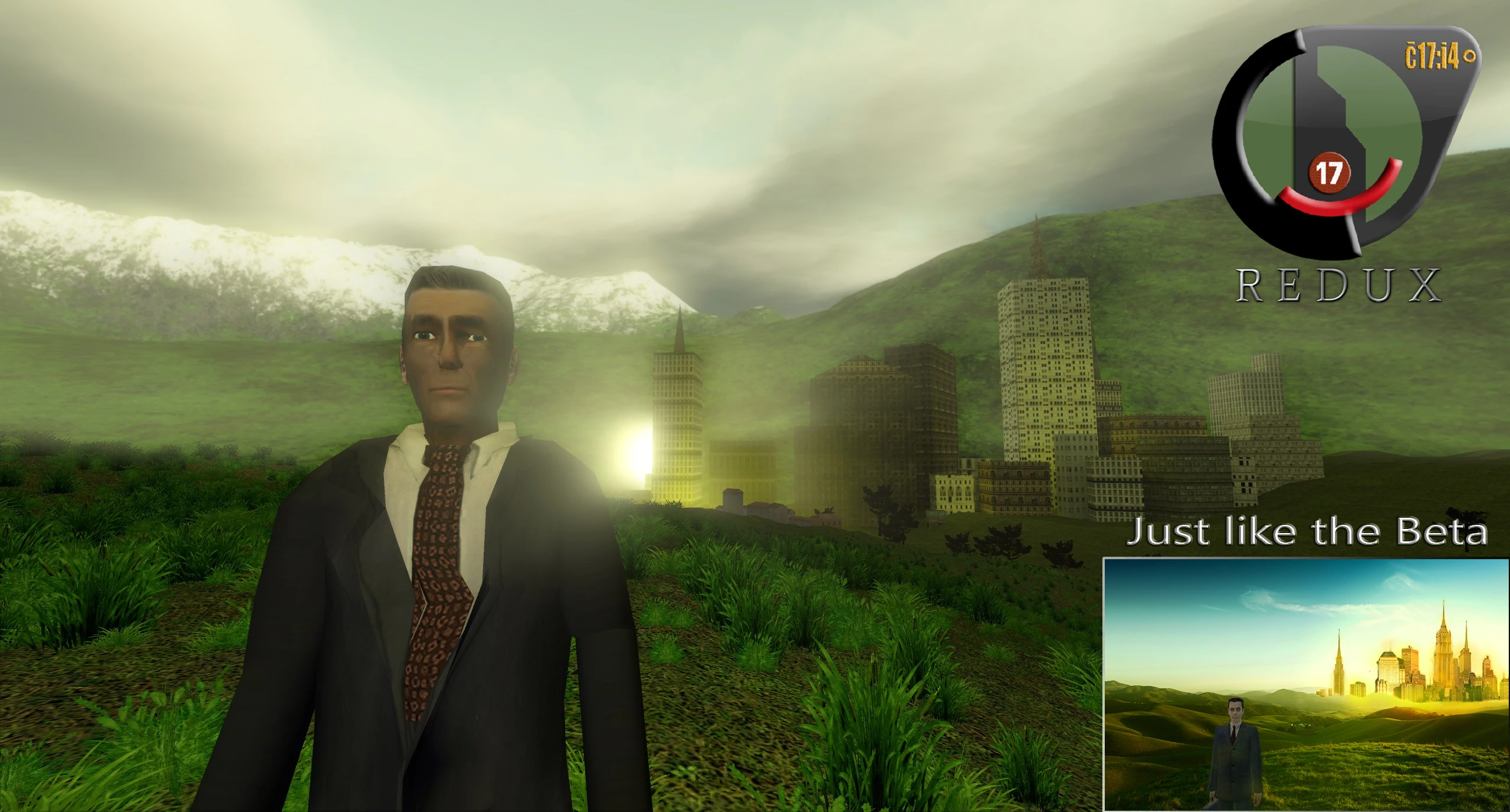
Half-Life 2 Beta Minimalist ModHalf-Life 2 (2004)
Half-Life 2 Beta Minimalist Mod – реставрация несуществующей бета-версии Half-Life 2 в минималистичном стиле. Ремейк максимально точно и уважительно воспроизводит оригинальные локации, основанные на ранних наработках и сюжете 1999–2001 годов, создавая необычный и ностальгический опыт.
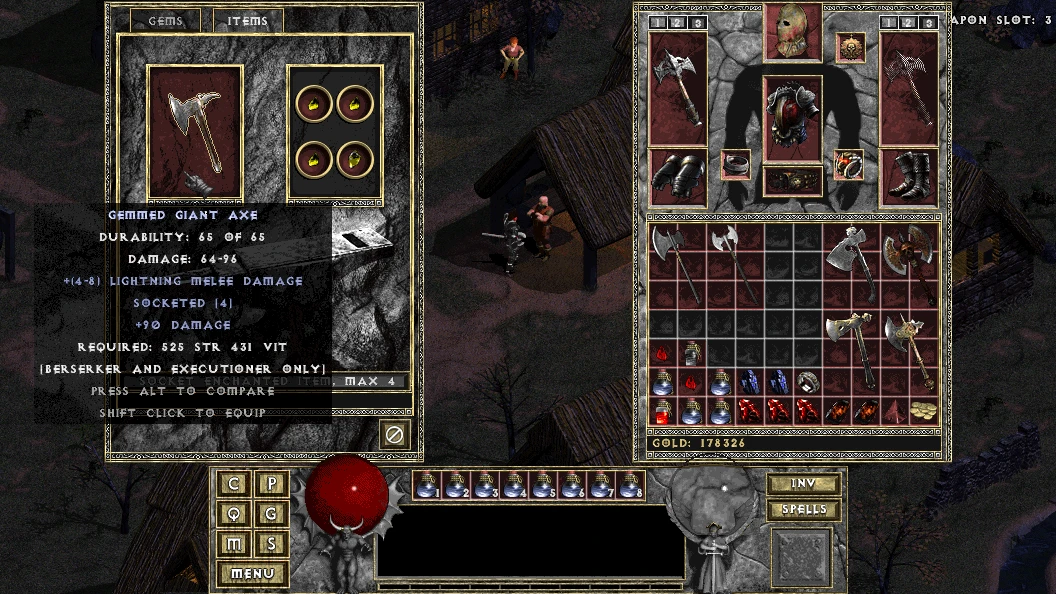
Diablo: The Hell 4Diablo (1996)
Diablo: The Hell 4 — четвертая серии модов The Hell — полной переработки оригинального Diablo. Вас ждут дополнительные исправления, новый контент, новые функции, новые режимы игры и новые классы.
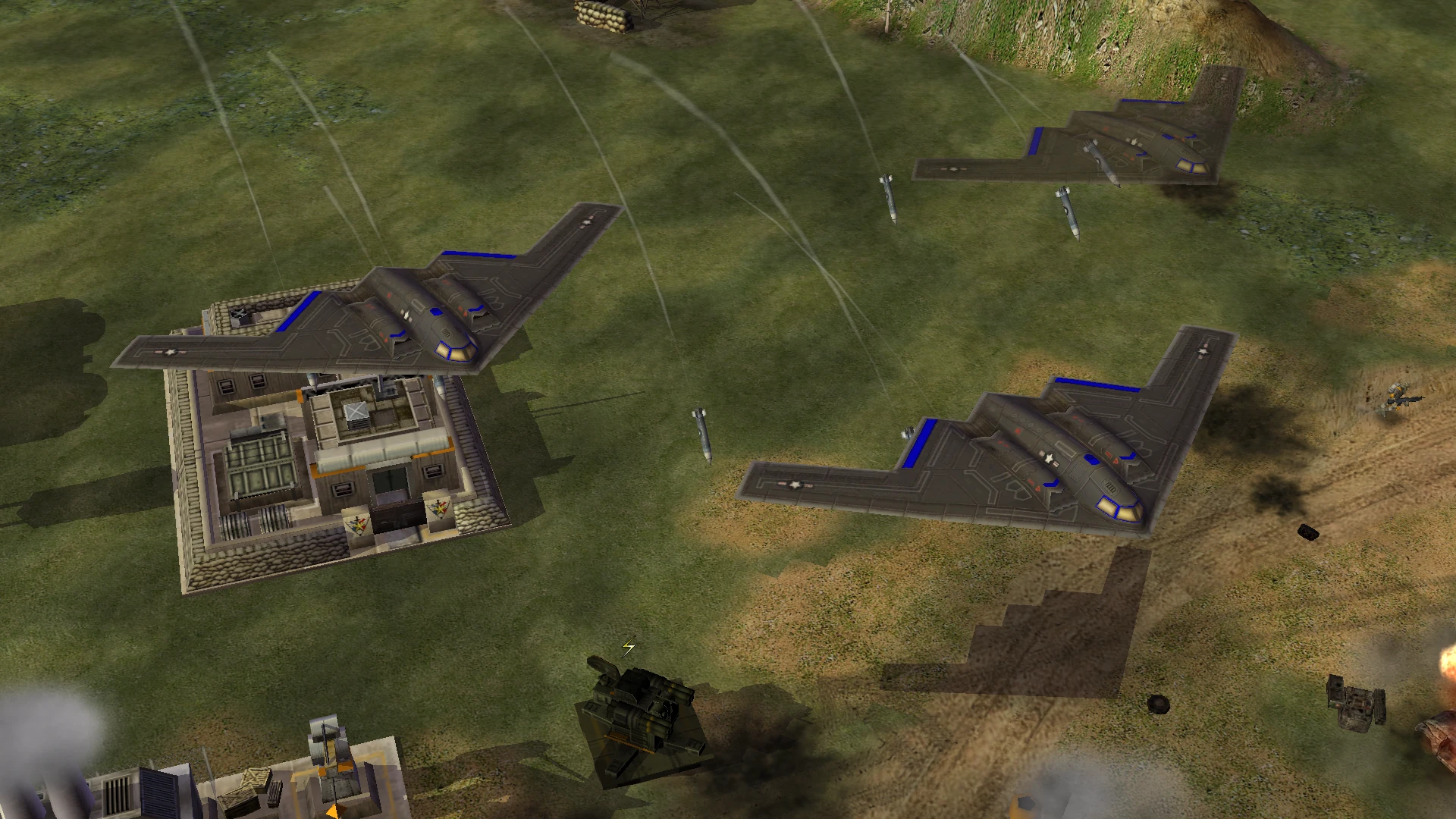
The End of DaysCommand & Conquer: Generals (2003)
The End of Days — масштабный мод для Generals Zero Hour, добавляющий полноценную фракцию России, обновляющий США, Китай и GLA новыми юнитами, постройками и улучшениями. Делает упор на реализм, вводит систему специализаций для всех сторон и серьёзно перерабатывает баланс.
